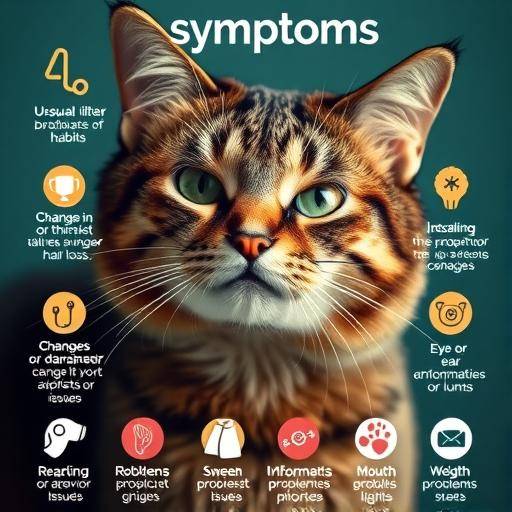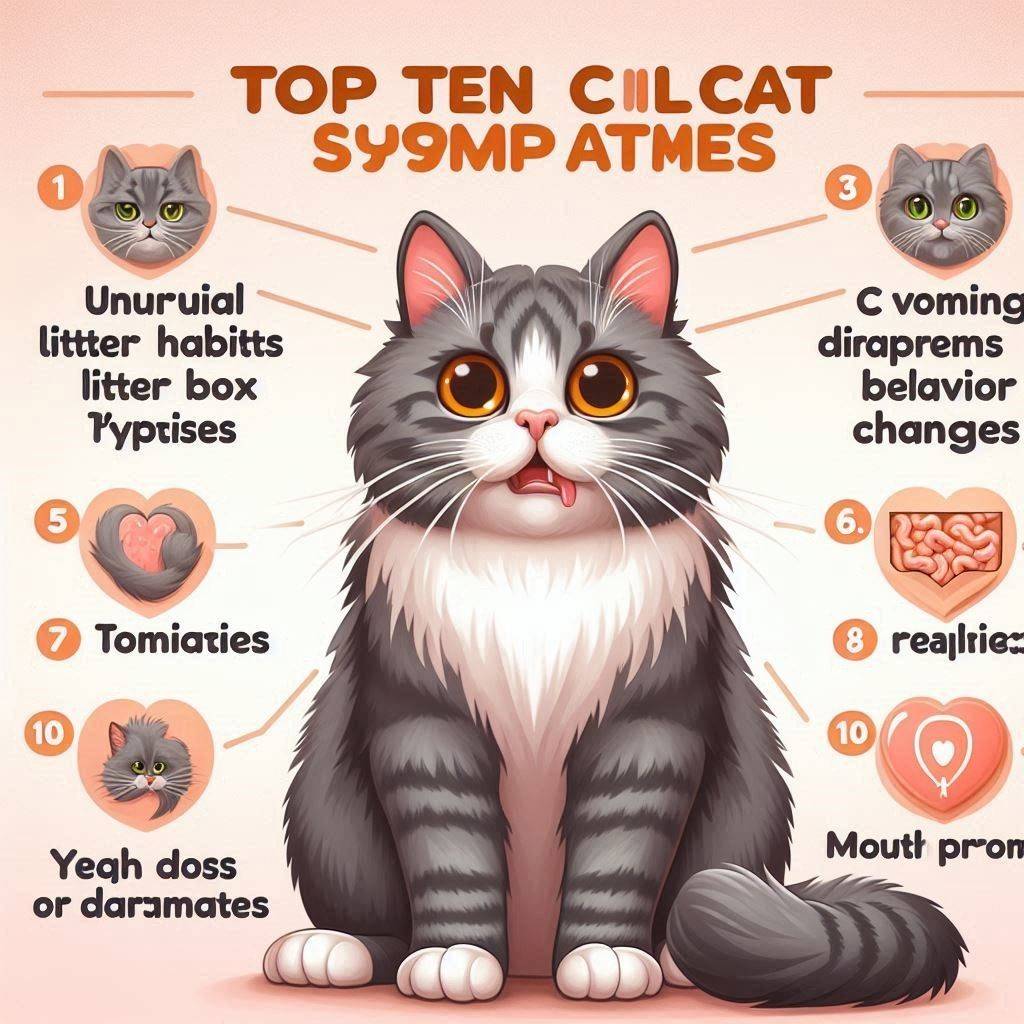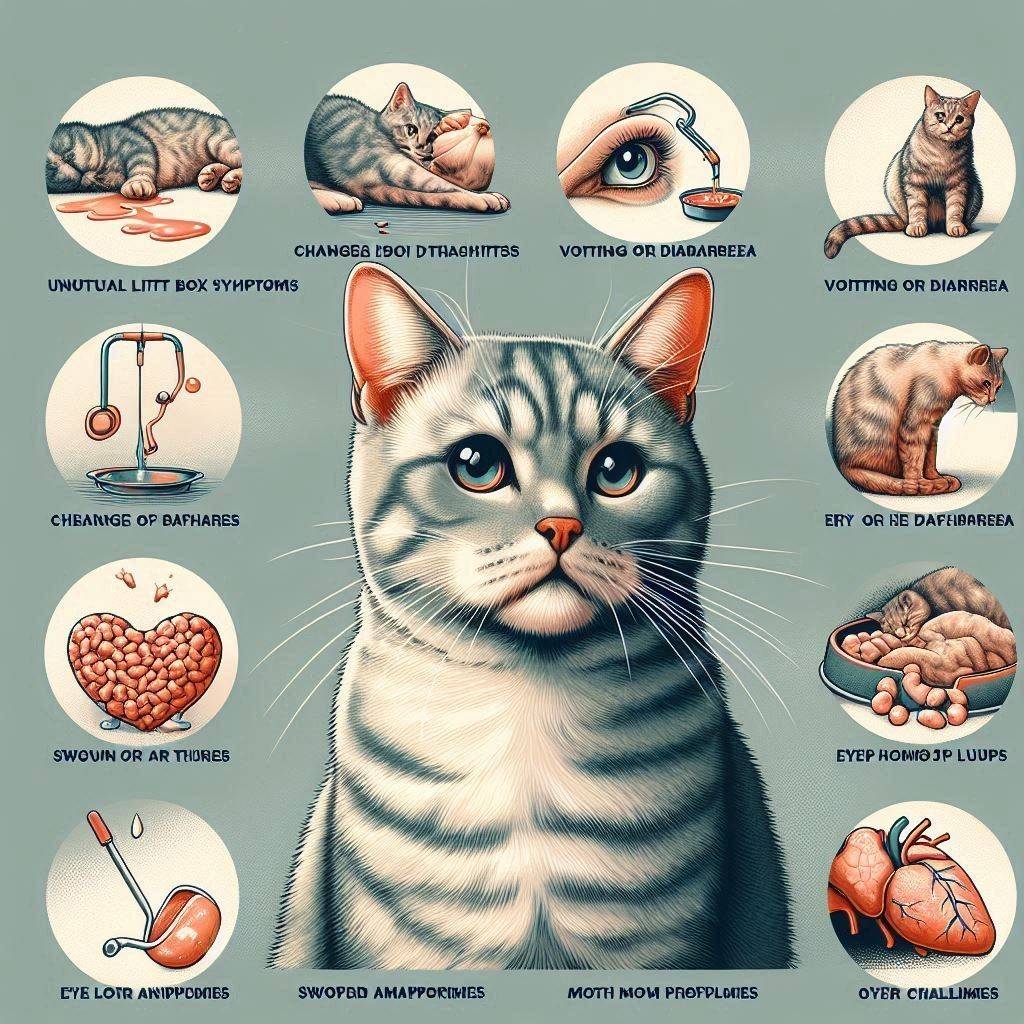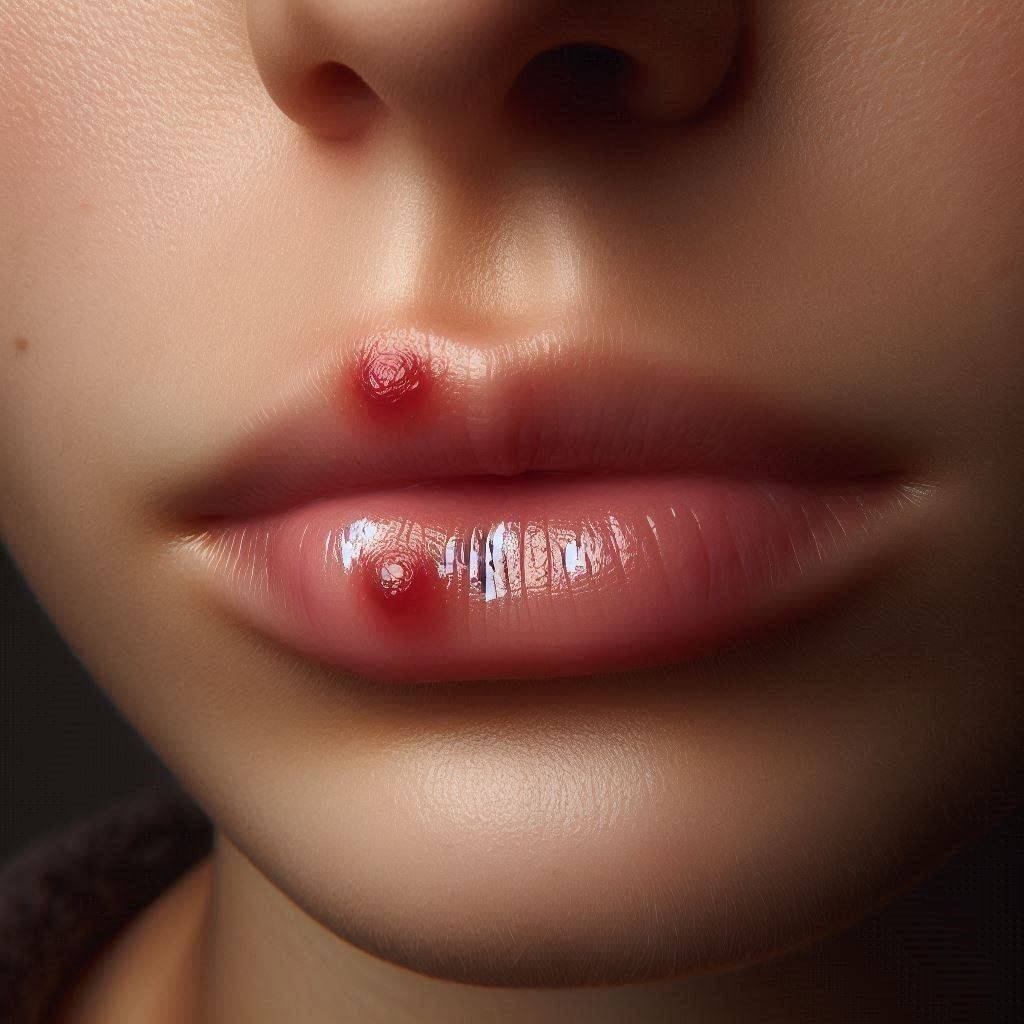10 Critical Cat Disease Symptoms: A Vet-Backed Guide for Attentive Owners
Discover the top 10 symptoms of cat diseases every owner should recognize. Learn to spot early warning signs and when to seek veterinary care for your feline friend.
Quick Summary: Cat Disease

- Unusual litter box habits
- Changes in appetite or thirst
- Vomiting or diarrhea
- Lethargy or behaviour changes
- Respiratory issues
- Skin problems or hair loss
- Eye or ear abnormalities
- Swelling or lumps
- Mouth problems
- Weight loss or gain
Introduction:
As a cat owner and veterinary enthusiast, I’ve seen firsthand how cat diseases can sneak up on even the most attentive pet parents. Today, I’m sharing the top 10 symptoms of cat diseases that every feline guardian should know. By recognizing these signs early, you can save your cat’s life and avoid costly treatments.
Top Ten Critical Cat Disease Symptoms

1. Unusual Litter Box Habits
One of the first signs of cat disease often appears in the litter box. I remember when my cat Whiskers suddenly started urinating outside his box – it turned out to be a urinary tract infection.
Cat diseases affecting the urinary system can cause:
- Frequent urination
- Straining to urinate
- Blood in urine
- Urinating outside the litter box
If you notice these symptoms, it’s crucial to consult a vet promptly. Urinary issues in cats can quickly become life-threatening, especially in male cats.
2. Changes in Appetite or Thirst
Cat diseases often manifest through changes in eating or drinking habits. During my years volunteering at a cat shelter, I’ve observed how various illnesses affect a cat’s appetite.
Watch for:
- Sudden increase or decrease in appetite
- Excessive thirst
- Difficulty eating or swallowing
These symptoms could indicate cat diseases such as diabetes, hyperthyroidism, or kidney disease. Early detection can make a significant difference in treatment outcomes.
3. Vomiting or Diarrhea
While occasional hairballs are normal, frequent vomiting, or diarrhea are common symptoms of cat diseases. I once fostered a cat who developed sudden diarrhea – it turned out to be an inflammatory bowel disease.
Be alert for:
- Frequent vomiting (more than once a week)
- Diarrhea lasting more than 24 hours
- Blood or mucus in stool
- Associated lethargy or loss of appetite
These symptoms can indicate various cat diseases, from minor digestive upset to more serious conditions like pancreatitis or intestinal parasites.
4. Lethargy or Behavior Changes
Cat diseases often cause noticeable changes in energy levels or behaviour. As someone who’s lived with cats for over two decades, I can attest to how subtle these changes can be.
Look out for:
- Decreased interest in play
- Hiding more than usual
- Increased aggression or irritability
- Changes in sleep patterns
These could be signs of various cat diseases, including infections, pain, or even cognitive dysfunction in older cats.
5. Respiratory Issues
Respiratory symptoms are common in many cat diseases. During my time working with a cat rescue organization, I’ve seen how quickly these issues can escalate.
Watch for:
- Coughing or wheezing
- Rapid or labored breathing
- Nasal discharge
- Sneezing fits
These symptoms could indicate cat diseases like upper respiratory infections, asthma, or even heart disease. Prompt veterinary care is essential, especially if breathing seems difficult.
6. Skin Problems or Hair Loss
Cat diseases often manifest on the skin or coat. As a long-time cat groomer, I’ve learned to spot these issues early.
Be on the lookout for:
- Excessive scratching or licking
- Bald patches or thinning fur
- Rashes, scabs, or red areas
- Unusual lumps or bumps
These symptoms could indicate cat diseases such as allergies, parasites, or even certain types of cancer. Regular grooming sessions are a successful way to monitor your cat’s skin health.
7. Eye or Ear Abnormalities
Many cat diseases affect the eyes or ears. In my experience, volunteering at vet clinics, I’ve seen how these symptoms can be overlooked.
Watch for:
- Discharge from eyes or ears
- Squinting or pawing at eyes
- Head shaking or ear scratching
- Cloudy eyes or visible third eyelid
These could be signs of cat diseases like conjunctivitis, ear mites, or more serious conditions like glaucoma.
8. Swelling or Lumps
Unexplained swellings can be symptoms of various cat diseases. I’ll never forget when my cat developed a small lump that turned out to be a treatable cyst.
Be alert for:
- Swollen limbs or joints
- Lumps under the skin
- Swollen lymph nodes (under the jaw, in the armpits, or groin)
- Abdominal swelling
These symptoms could indicate cat diseases ranging from abscesses to more serious conditions like tumours or organ enlargement.
9. Mouth Problems
Oral health issues can be indicators of various cat diseases. As someone who’s had to administer medication to cats with mouth problems, I can’t stress enough the importance of regular dental check-ups.
Look out for:
- Bad breath
- Drooling
- Difficulty eating
- Red or swollen gums
These could be signs of cat diseases like dental infections, stomatitis, or even kidney disease, which can cause mouth ulcers.
10. Weight Loss or Gain
Unexplained weight changes can be symptoms of several cat diseases. In my years of cat ownership, I’ve learned that even minor weight changes can be significant.
Monitor for:
- Sudden weight loss despite normal eating
- Rapid weight gain
- Bloated appearance
These symptoms could indicate cat diseases such as hyperthyroidism, diabetes, or gastrointestinal issues.
Treating and Preventing Cat Diseases: A Comprehensive Guide
-
Unusual Litter Box Habits
Treatment:
- For urinary tract infections (UTIs), veterinarians typically prescribe antibiotics.
- Urinary blockages may require emergency catheterization or surgery.
- Dietary changes can help manage conditions like bladder stones or crystals.
Prevention:
- Ensure clean, accessible litter boxes (one per cat, plus one extra).
- Provide fresh water daily to encourage drinking.
- Consider a urinary health cat food for prone cats.
I’ve found that using clumping litter and scooping daily has significantly reduced UTIs in my cats. It’s a simple step that makes a big difference in preventing these cat diseases.
-
Changes in Appetite or Thirst
Treatment:
- Depends on the underlying cause. For example, diabetes requires insulin therapy and diet management.
- Hyperthyroidism may be treated with medication, radioiodine therapy, or surgery.
- Kidney disease often involves fluid therapy and dietary changes.
Prevention:
- Regular vet check-ups to catch issues early.
- Maintain a consistent, balanced diet appropriate for your cat’s age and health status.
- Monitor food and water intake regularly.
In my experience, switching to scheduled feeding times rather than free feeding helped me notice appetite changes more quickly, allowing for earlier detection of potential cat diseases.
-
Vomiting or Diarrhea
Treatment:
- Mild cases may resolve with brief fasting followed by a bland diet.
- Severe or persistent cases require veterinary care, possibly including fluid therapy, anti-nausea medication, or antibiotics.
- Chronic conditions like inflammatory bowel disease may need long-term management with diet and medication.
Prevention:
- Avoid sudden diet changes.
- Keep your cat away from toxic plants and human foods.
- Regular deworming as recommended by your vet.
I’ve learned that slowly transitioning to new foods over a week can prevent many digestive upsets in cats, reducing the risk of these common cat disease symptoms.
-
Lethargy or Behavior Changes
Treatment:
- Depends on the underlying cause. Pain may be managed with medication.
- Infections typically require antibiotics.
- Cognitive dysfunction in older cats might be managed with supplements and environmental enrichment.
Prevention:
- Provide a stimulating environment with toys and climbing spaces.
- Maintain a consistent routine.
- Regular vet check-ups to catch health issues early.
In my cat shelter volunteer work, I’ve seen how interactive play sessions can significantly improve a cat’s mood and energy levels, often being the first sign of recovery from various cat diseases.
-
Respiratory Issues
Treatment:
- Upper respiratory infections often require supportive care, sometimes antibiotics.
- Asthma may be managed with inhaled medications.
- Heart disease treatment can include medication to improve heart function.
Prevention:
- Keep your cat’s vaccinations up to date.
- Reduce stress in multi-cat households.
- Avoid exposure to cigarette smoke and strong fragrances.
I’ve found that using a good quality air purifier has significantly reduced respiratory issues in my asthmatic cat, helping prevent flare-ups of this chronic cat disease.
-
Skin Problems or Hair Loss
Treatment:
- Parasites are typically treated with topical or oral medications.
- Allergies may require antihistamines, steroids, or immunotherapy.
- Fungal infections often need antifungal medications.
Prevention:
- Regular grooming to check for abnormalities.
- Flea prevention treatments as recommended by your vet.
- A balanced diet to support skin and coat health.
In my experience as a cat groomer, I’ve found that weekly brushing not only prevents matting but also allows early detection of skin issues related to various cat diseases.
-
Eye or Ear Abnormalities
Treatment:
- Eye infections often require antibiotic drops or ointments.
- Ear mites are typically treated with topical medications.
- More serious conditions like glaucoma may need surgery or long-term medication.
Prevention:
- Gentle cleaning of eyes and ears as part of regular grooming.
- Keep your cat indoors or supervised to reduce injury risk.
- Prompt attention to any signs of discomfort or discharge.
I’ve learned that cats with light-coloured fur are more prone to sunburn and subsequent eye problems. Using pet-safe sunscreen on ear tips and noses can help prevent these cat diseases in outdoor cats.
-
Swelling or Lumps
Treatment:
- Abscesses usually require draining and antibiotics.
- Tumors may need surgical removal and possibly chemotherapy.
- Some swellings, like vaccine reactions, may resolve on their own with monitoring.
Prevention:
- Regular physical examinations, both at home and by a vet.
- Prevent injuries by keeping cats indoors or in a safe outdoor enclosure.
- Maintain a healthy diet and weight to support the immune system.
During my time fostering cats, I’ve found that a monthly “spa day” where I thoroughly pet and examine each cat has been crucial in the early detection of lumps related to various cat diseases.
-
Mouth Problems
Treatment:
- Dental cleaning under anesthesia for severe tartar buildup.
- Extractions for badly damaged teeth.
- Antibiotics for infections.
- Special diets or medications for conditions like stomatitis.
Prevention:
- Regular tooth brushing (if tolerated) or dental treats.
- Annual dental check-ups with your vet.
- Provide dental-friendly toys and foods.
I’ve discovered that starting dental care routines when cats are young can significantly reduce the incidence of cat diseases affecting the mouth. It’s much easier to prevent than to treat!
-
Weight Loss or Gain
Treatment:
- Depends on the underlying cause. Hyperthyroidism typically requires medication or radioiodine therapy.
- Diabetes often needs insulin therapy and diet management.
- Unexplained weight loss requires a thorough veterinary investigation.
Prevention:
- Maintain a balanced diet appropriate for your cat’s age and health status.
- Regular weigh-ins at home or the vet’s office.
- Provide opportunities for exercise through play.
In my years of cat ownership, I’ve found that using a digital scale to weigh my cats monthly has been invaluable in catching weight changes early, often the first sign of several serious cat diseases.
Remember, while these tips can help manage and prevent many cat diseases, they’re not a substitute for professional veterinary care. Always consult with your vet for proper diagnosis and treatment plans tailored to your cat’s specific needs.
By staying vigilant and proactive about your cat’s health, you can often prevent cat diseases or catch them early when they’re most treatable. Your feline friend depends on you – with these tips, you’re well-equipped to provide the best care possible!
Frequently Asked Questions
What is the most common disease that cats get?
Upper respiratory infections are among the most common cat diseases. These are typically caused by viruses and can spread quickly in multi-cat households or shelters. Symptoms include sneezing, runny eyes, and nasal discharge. While often not severe in healthy adult cats, they can be more serious in kittens, senior cats, or those with weakened immune systems.
What diseases can cats transmit to humans?
While most cat diseases are not transmissible to humans, some zoonotic diseases exist. These include:
- Toxoplasmosis: Transmitted through infected cat feces
- Cat scratch disease: Caused by bacteria in cat saliva
- Ringworm: A fungal infection that can spread through direct contact
Proper hygiene and regular veterinary care can significantly reduce these risks.
What is the most contagious disease in cats?
Feline panleukopenia virus (FPV), also known as feline distemper, is one of the most contagious cat diseases. It’s highly resistant to the environment and can spread quickly among unvaccinated cats. Symptoms include severe vomiting, diarrhea, and a compromised immune system. Vaccination is crucial in preventing this fatal disease.
Do indoor cats get diseases?
Yes, indoor cats can still contract various cat diseases. While they’re at lower risk for injuries and some infections, they can still develop:
- Dental disease
- Obesity-related issues
- Urinary tract problems
- Certain viral infections
Regular vet check-ups and a healthy lifestyle are important for both indoor and outdoor cats.
Conclusion:
Recognizing these top 10 symptoms of cat diseases can help you catch health issues early, saving your feline friend’s life. Remember, you know your cat best – if something seems off, don’t hesitate to consult your veterinarian. Thank you for taking the time to learn about these important signs. Your cat’s health is worth every moment of attention you give it.



